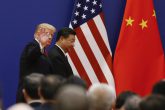September 04, 2014
The Challenge of Responding to Maritime Coercion
In this first working paper produced as part of CNAS’ Maritime Strategy Project, Dr. Patrick Cronin provides a framework for further thinking about both the need to impose costs on bad behavior and gray zone assertiveness in maritime Asia, and the set of strategies best able to accomplish behavioral change while preserving the overall peaceful character of the region.
After making the case for why cost imposition, or balancing, is a critical element of an overall portfolio along with engagement and binding, Dr. Cronin suggests a range of diplomatic, informational, military and economic measures that could raise the costs of assertive actions in Indo-Pacific waters, as well as some challenges and risks associated with these strategies. Overall, policymakers must be broad-minded in their thinking about how to preserve and adapt an inclusive, rules-based system of open access to the global commons. Future papers in this series will address other types and facets of cost-imposing strategies for the Indo-Pacific. Check back for frequent updates here.
More from CNAS
-
Trump Heads to Asia with High-Stakes Meeting with China’s Xi on the Agenda
President Donald Trump departed Washington Friday night for Asia with trade and U.S. relations with China top of mind. He is set to hold a high-stakes sit-down with Chinese Pr...
By Jacob Stokes
-
Defense / Indo-Pacific Security
Is the U.S. Ready for War with China?U.S. military planners are caught in an impossible dilemma....
By Franz-Stefan Gady
-
North Korea Hardens Posture as Allies Recalibrate Before APEC
With President Trump set to attend the APEC summit in Gyeongju, questions are resurfacing about a possible return to U.S.–North Korea diplomacy. No working-level talks are und...
By Dr. Go Myong-Hyun
-
Sharper: India and the Quad
Despite recent bilateral challenges, India’s relationship with the United States and its leadership within the Quad remains indispensable for an Indo-Pacific that is cooperati...
By Keerthi Martyn & Charles Horn





